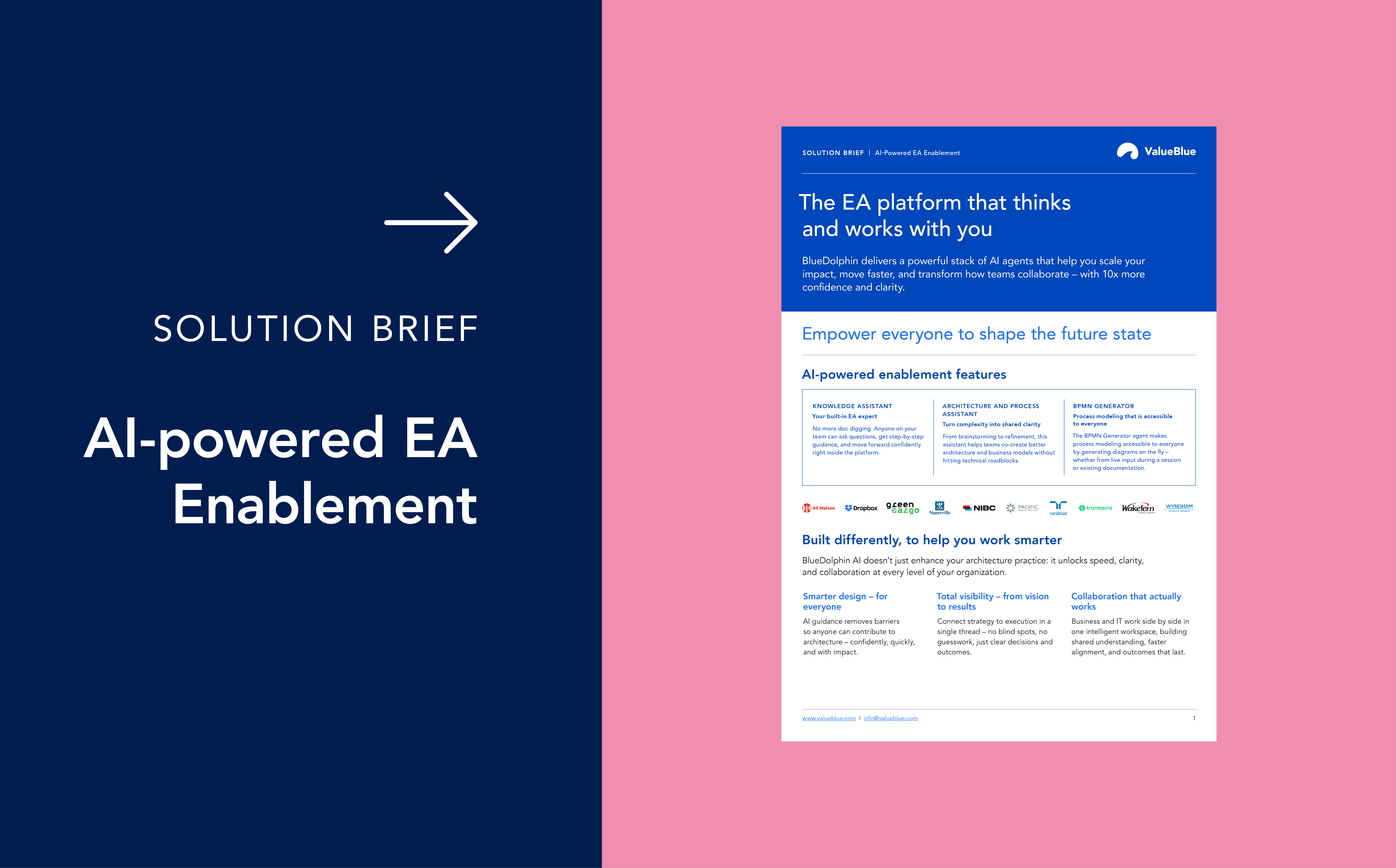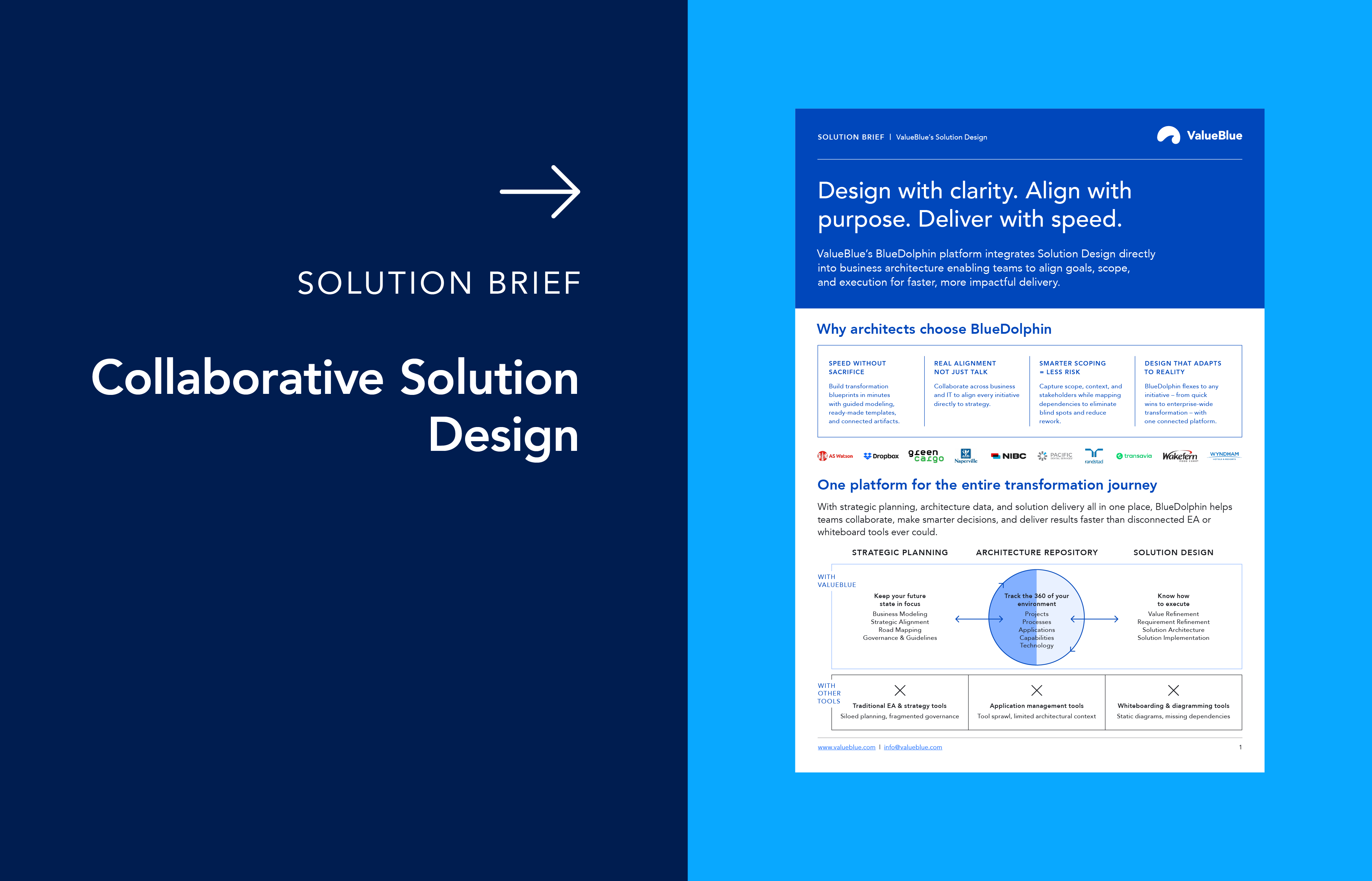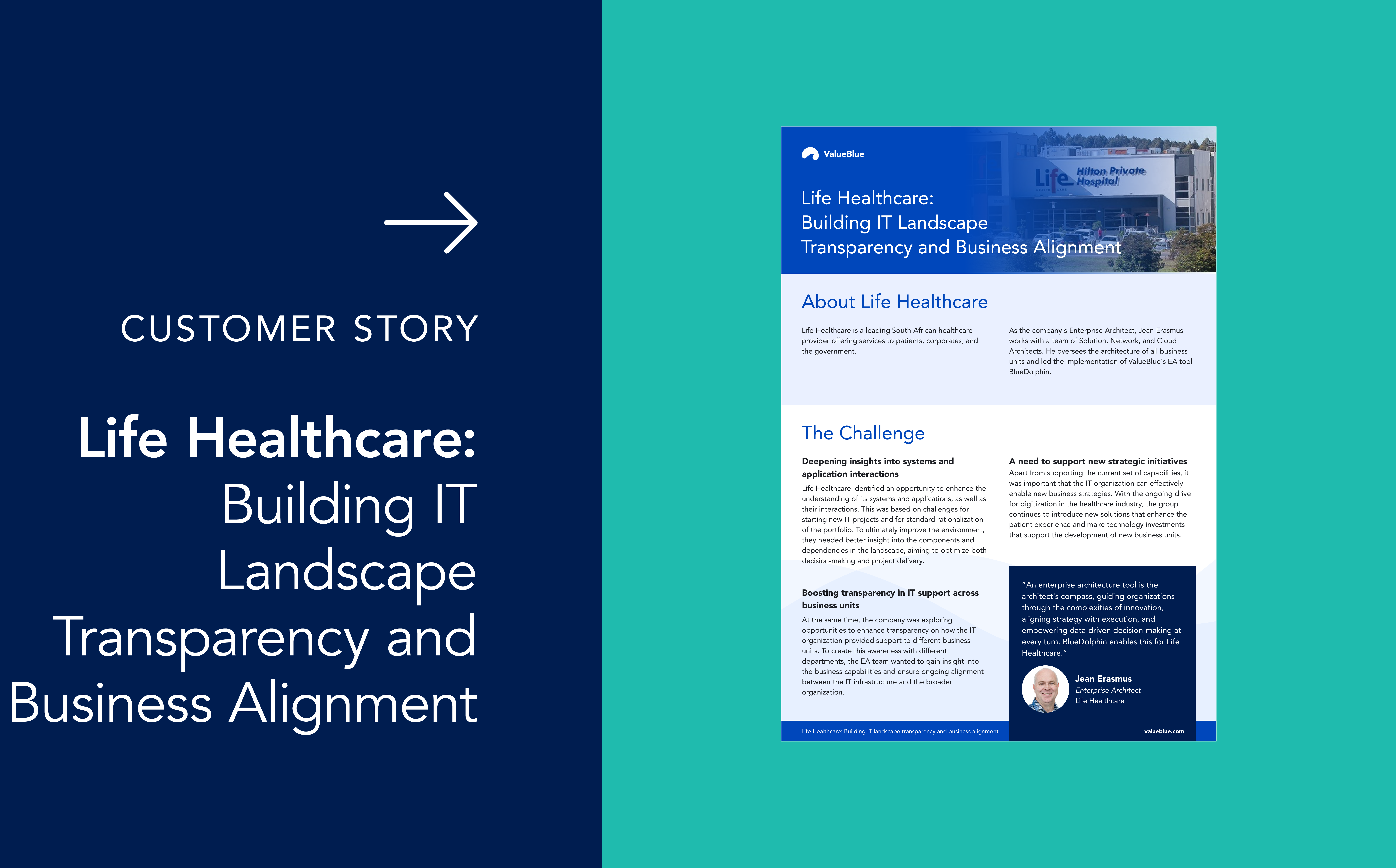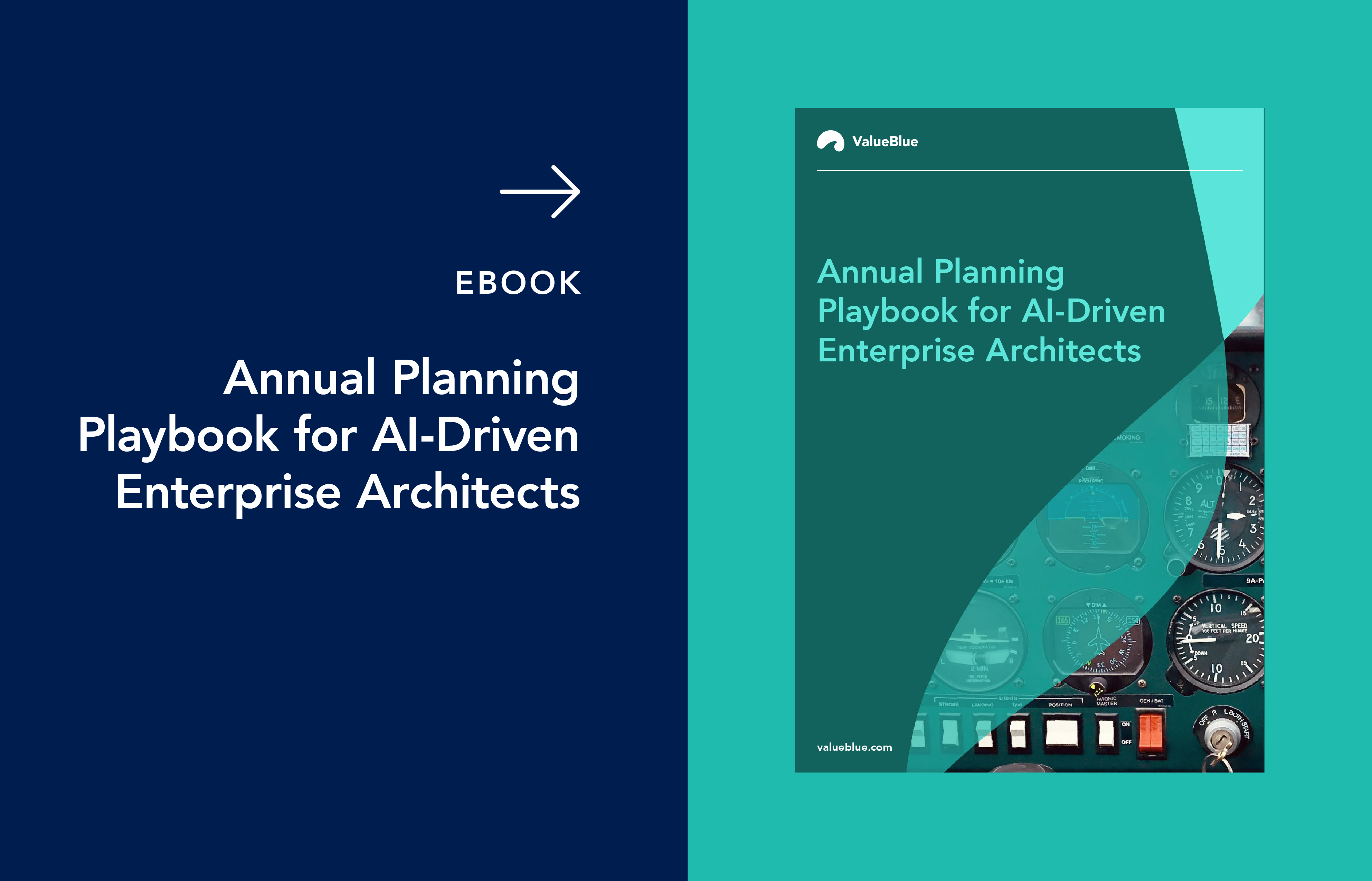Strengthening IT Governance with Smarter Enterprise Architecture
Enterprise Architecture is now at the core of robust IT governance. Forward-thinking organizations have realized that effective IT governance does much more than ensure compliance – it cultivates clarity, shared accountability, and measurable business growth across the entire organization. Tools like BlueDolphin exemplify this shift by providing integrated platforms for transparent, resilient systems, supporting continuous improvement at every level.
What is IT governance?
IT governance is the system through which organizations direct and control their IT assets to achieve business goals, manage risk, and address compliance requirements. It outlines the frameworks, structures, and processes that guide IT decision-making, ensuring that technology investments are aligned with strategic priorities. Effective IT governance empowers business leaders and technology teams with shared visibility. As a result, each decision about infrastructure, software, or data serves a clear strategic purpose.
Enterprise Architecture provides the holistic view and model organizations need to make governance actionable. By connecting systems, people, policies, and goals, EA gives organizations a single source of truth for IT oversight – delivering the insight necessary for stronger risk management, smarter investments, and sustainable growth.
What IT governance frameworks are there?
Several IT governance frameworks help organizations standardize and strengthen oversight. Some of the most widely adopted include:
- COBIT: A globally recognized framework for managing IT risk, processes, and controls, COBIT provides structure for performance measurement, accountability, and process improvement.
- ITIL: The IT Infrastructure Library focuses on service management, defining best practices for delivering efficient, reliable IT services.
- TOGAF®: The Open Group Architecture Framework bridges Enterprise Architecture and governance, helping organizations align IT resources with business objectives.
- ISO/IEC 38500: An international standard offering principles for corporate IT governance and assignment of roles, responsibilities, and evaluations.
- NIST and SOX: Key US government and regulatory standards guiding organizations on security controls, data privacy, and regulatory compliance.
Choosing the right framework allows organizations to establish benchmarks for risk management, compliance, and performance, while supporting adaptation to changing business priorities.
The 7 IT governance best practices
1. Elevate IT’s voice in business strategy
Technology teams create more value when their expertise influences strategic planning. BlueDolphin integrates real-time risk assessment, dependency mapping, and opportunity analysis, so both IT and executives can co-design strategies. With collaborative roadmapping, organizations make agility and resilience core business strengths – IT is no longer a back-office function, but a strategic partner that shapes outcomes.
Click here to discover the best practices for integrating IT leadership into your strategy.
2. Invite every stakeholder for shared success.
True governance requires inclusive engagement. BlueDolphin’s mapping features open doors to HR, legal, compliance, and operations leaders, allowing everyone to contribute to priority setting, policy creation, and risk forecasting. By connecting each role to relevant processes and documentation, organizations eliminate silos and speed up policy rollouts and project launches. Stakeholders gain greater satisfaction, and governance becomes more predictable.
Read this article to learn how early stakeholder involvement streamlines governance.
3. Create a clear, connected asset map.
Traceability is essential for modern governance. BlueDolphin offers robust asset mapping, tying users, processes, and policies to the systems they depend on. Up-to-date visuals streamline audits and ensure everyone is responsible for every change. Teams can instantly see the impact of updates or new regulations, safeguarding business continuity and minimizing surprises.
To learn more about business architecture diagram techniques, read this blog.
4. Make risk management a team effort.
No IT project stands alone – collaborative risk management is crucial. BlueDolphin’s dashboards and risk analysis features allow teams to flag critical and deprecated assets together, prioritize system upgrades, and conduct structured root-cause analyses. Using visual tools like fishbone diagrams helps teams uncover issues, leading to safer projects and faster, team-wide decisions.
Want to learn more about collaborative risk and impact analysis? Click here.
5. Keep compliance up to date.
Regulations change fast, so compliance must keep up. BlueDolphin links every system and process to the latest policies and requirements, creating a living compliance map for all business units. Regular reviews help teams close gaps quickly. With actionable templates and shared dashboards, audits become less stressful, and organizations are always ready for new standards.
6. Build sustainability into your IT governance.
Modern governance must address environmental and social responsibility. BlueDolphin enables organizations to set, track, and achieve sustainability goals, with transparent reporting that highlights progress and boosts company culture. This integration strengthens values and supports continuous business improvement.
7. Ensure ongoing review – and ongoing growth.
Effective governance is never static. BlueDolphin’s iterative tools support continuous feedback, transparent dashboards, and regular policy updates that stay aligned with evolving business goals. By making review and adaptation a routine, organizations maintain resilience and adaptability while keeping governance standards fresh.
Start strengthening your IT governance today!
Robust IT governance, driven by collaborative Enterprise Architecture, is crucial for maintaining lasting clarity, accountability, and resilience. Book a free demo and discover how BlueDolphin unites strategy, operations, and compliance so you can govern smarter, manage risk, and adapt to change.





